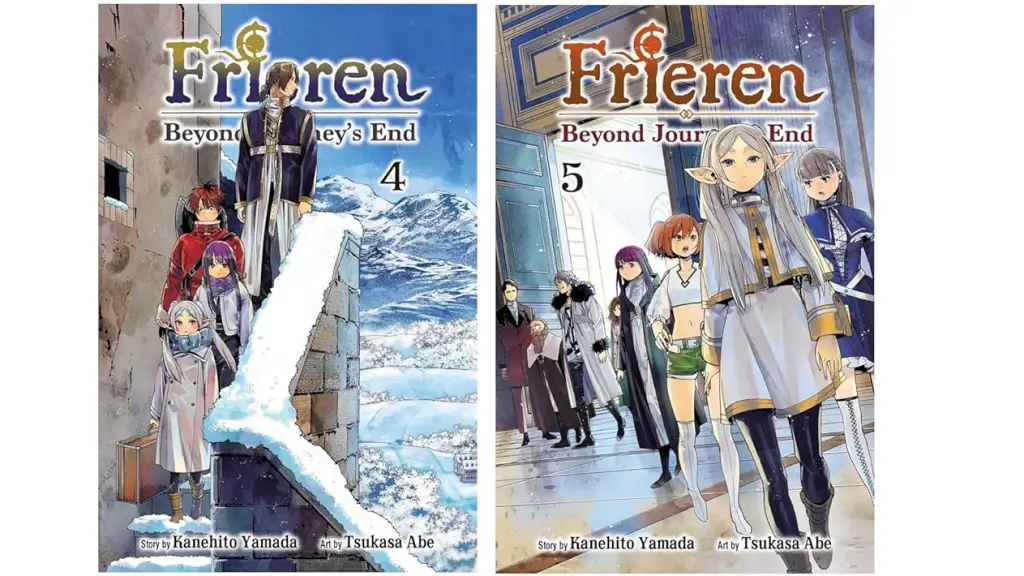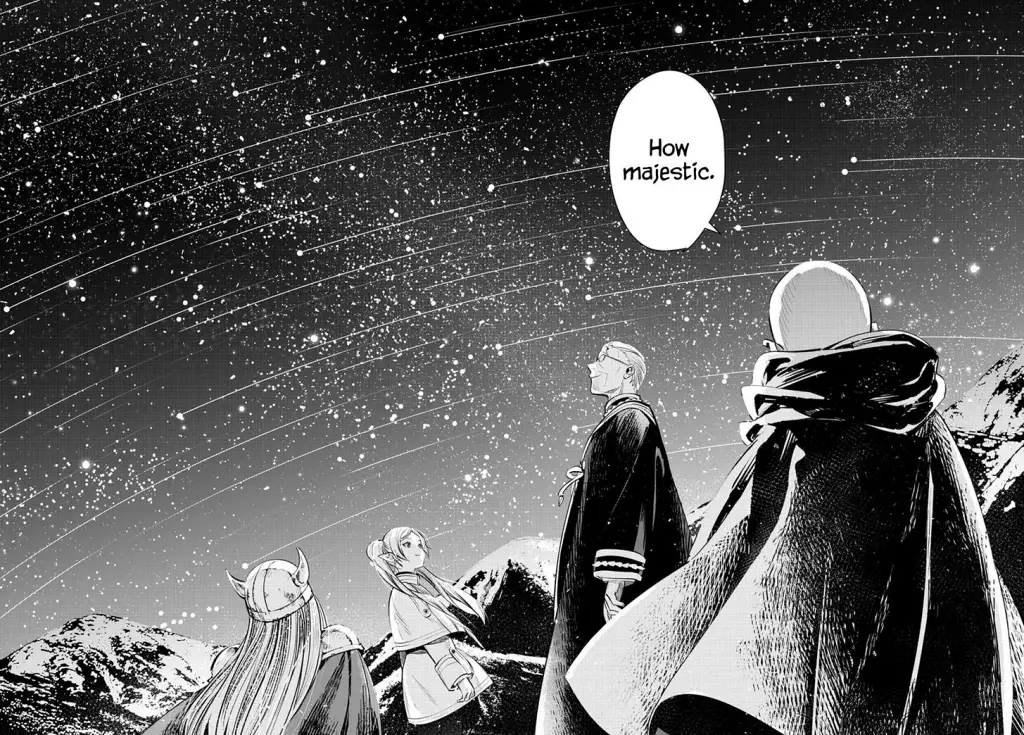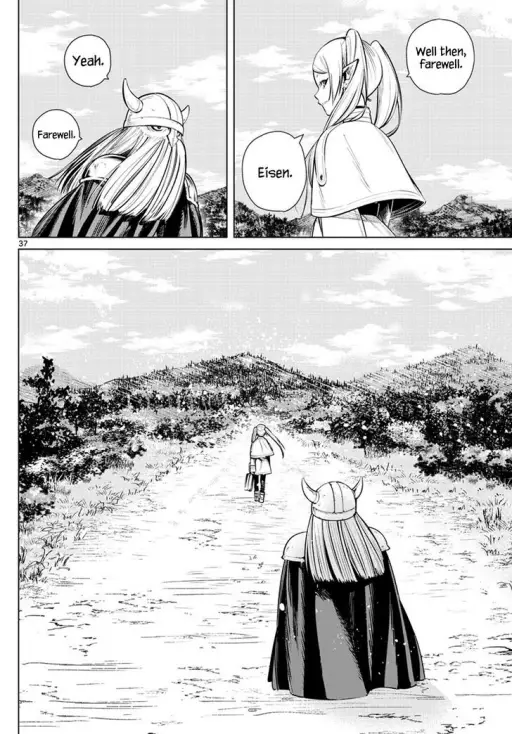So, you’ve heard the hype. You know Frieren: Beyond Journey’s End is a modern masterpiece, but now you’re stuck at the classic weeb crossroads: Frieren manga vs anime.
Do you dive into the pristine pages of the source material, or do you let Madhouse’s breathtaking animation and Evan Call’s soul-stirring score wash over you? It’s like choosing between reading an ancient, magical grimoire or watching a legendary bard perform it as an epic ballad. Both are incredible, but the experience is totally different.
As someone who has done both (and cried during both), I’m here to be your guide. Let’s break down the Frieren manga vs anime debate so you can start your journey the best way for you.
Two Roads to the Same Beautiful Destination
First, the most important thing: there is no wrong choice. Both the manga, written by Kanehito Yamada and illustrated by Tsukasa Abe, and the anime by Studio Madhouse are 10/10 masterpieces in their own right. The manga itself is an ongoing series, with 13 volumes officially available in English from VIZ Media. The core story, an elf mage dealing with regret and learning about humanity after her great adventure is over, is intact and perfectly executed in both.

The difference isn’t in the story’s heart, but in how that heart beats. The manga is a quiet, personal introspection. The anime is a lush, emotional symphony. Your choice depends on what kind of experience you’re craving.
The Art of Storytelling: Manga’s Intimate Panels vs. Anime’s Living World
Let’s talk about the most immediate difference: the art.
The Manga’s Intimate Beauty: Tsukasa Abe’s art is deceptively simple. It’s clean, relies on masterful use of line work, and uses its panels to create a sense of quiet stillness. You linger on a character’s subtle, often deadpan expression. You get to appreciate the intricate details of a spell diagram or the architecture of a town at your own pace. It feels scholarly, like you’re poring over Frieren’s own spellbook. The lack of color somehow makes the world feel more ancient and timeless.

The Anime’s Cinematic Splendor: The anime, however, breathes life into this world. The color palette is soft and atmospheric, making every landscape look like a painting. Sunlight feels warm, nights feel deep and cold. The animation isn’t about flashy fights (though they are fluid); it’s about the small things, the way Frieren’s hair moves in the breeze, the steam rising from a cup of tea, the slow blink of an character’s eye that conveys a universe of feeling. It uses visual language to amplify the emotion in a way static panels cannot.
Pacing Compared: A Thoughtful Read vs. a Cinematic Journey
This is where the Frieren manga vs anime debate gets really interesting.
Manga Pacing: The manga is… even slower. And I mean that in the best way possible. It is a masterclass in using silence and negative space on the page. You sit with a single, powerful line of dialogue for as long as you need. The pacing is entirely in your hands, allowing for deep reflection. It’s a meditative experience.

Anime Pacing: The anime, by necessity, has a more guided flow. It uses its runtime (mostly adapting 2-3 chapters per episode) to create a rhythmic, cinematic pace. It knows when to hold a shot for emotional impact and when to move the scene along. The addition of a soundtrack and ambient sound creates a rhythm that the manga lacks, making the journey feel more like a structured, epic film.
The Sound of Silence: What the Anime’s Score Adds to the Journey
This is the anime’s single biggest advantage and a core part of the Frieren experience. Composer Evan Call created a score that is a character in itself. The music is a breathtaking blend of melancholy, wonder, and triumph.
The quiet moments are made more profound by a soft, piano melody. The epic vistas are accompanied by soaring orchestral pieces. There are scenes in the anime where a single, perfectly placed musical swell will bring tears to your eyes, where the same moment in the manga might only elicit a quiet, sad smile. The soundtrack doesn’t just accompany the story; it elevates it, providing an emotional guidewire that is simply impossible to replicate on the page.
Expanded Moments & Key Differences: What the Anime Adds
The Frieren anime is remarkably faithful, but it isn’t a 1:1 slideshow. The directors at Madhouse added small extensions and scenes that enrich the world and characters.
- Extended Journeys: We see more of the actual travel between towns, emphasizing the long, wandering nature of the quest.
- Visual Storytelling: The anime “shows” more than the manga sometimes “tells,” using its visual medium to convey character feelings without internal monologue.
- Fight Choreography: While the manga presents fights as a series of key moments, the anime animates the full flow of combat, making battles like those against Aura and Lügner feel more dynamic and impactful.
These aren’t filler; they are loving embellishments that demonstrate a deep understanding of the source material.
The Fandom’s Verdict: How Fans Embraced Both Masterpieces
You can’t have a true Frieren manga vs anime discussion without hearing from the community that championed it from the start. The fan reception for both versions has been a fascinating thing to watch, and it really highlights the strengths of each format.
The Manga Fandom: The Cult Following That Knew
Long before the anime was even announced, the Frieren manga had built a dedicated, almost reverent fanbase. Readers on sites like Reddit and MyAnimeList praised it as a “hidden gem” and a “masterpiece in the making.” The focus was always on:
- The Subtle Art: Fans adored Tsukasa Abe’s detailed, often understated artwork, noting how a single, quiet panel could carry more emotional weight than a full page of action in another series.
- The Pacing: It was celebrated for its bravery in being slow and contemplative, a welcome respite from more frantic shonen series.
- The “Discovery” Effect: There was a sense of pride in being a fan of something so special before it hit the mainstream. It was their secret, profound story.
The Anime Explosion: When the Secret Went Global
The announcement of a Madhouse adaptation sent waves of excitement through the manga community, but it was the anime’s release that truly launched Frieren into the stratosphere. The reception was explosive and widespread.
- Critical & Audience Acclaim: The anime didn’t just meet expectations; it shattered them. It quickly achieved a rare #1 spot on MyAnimeList, a testament to its near-universal appeal.
- The “Evan Call” Effect: The soundtrack became an instant classic. It was impossible to find a discussion thread without multiple comments praising the music for elevating the story to new emotional heights. Clips of key scenes set to the score went viral on social media, drawing in countless new fans.
- A Different Kind of Hype: While the manga’s fandom was quiet and reflective, the anime’s fandom was loud with awe. The community collectively freaked out over the stunning animation of a simple flower field, or the perfect voice acting for Frieren’s deadpan lines. It became a weekly event.
The Beautiful Consensus
What’s remarkable in the Frieren manga vs anime debate among fans is the lack of toxicity. There’s no real war between manga purists and anime-onlys. Instead, the consensus is overwhelmingly positive for both. The most common sentiment you’ll see is:
- The anime is a perfect adaptation. Manga readers are largely thrilled with how faithfully and beautifully their beloved series was brought to life.
- They are complementary. Most agree that experiencing both is the ideal path, as each enhances the appreciation of the other.
The fan reception proves that a great story, told with sincerity, can conquer all mediums. The manga laid a flawless foundation, and the anime built a cathedral around it, and the fandom celebrates both.
The Final Verdict: Your Personal Guide to Choosing
Alright, the moment of truth. Based on everything we’ve compared, here is your personalized guide.
You Should Start with the Frieren Anime If…
- You are new to anime or prefer a more accessible, cinematic experience.
- You are deeply moved by music and sound design as a storytelling tool.
- You want to experience the story with the community as it’s a current, trending masterpiece.
- You might struggle with the deliberately slow pace of the manga and prefer a guided narrative flow.
You Should Start with the Frieren Manga If…
- You are a purist who loves experiencing the original author’s and artist’s vision firsthand.
- You value the intimacy of reading and setting your own pace, savoring every panel and line of dialogue.
- You want to get ahead of the anime and know the entire story right now.
- You appreciate the unique beauty and subtlety of black-and-white comic art.
The Ultimate Way to Experience Frieren
For the absolute richest experience? Watch the Frieren: Beyond Journey’s End anime first. Let its sound and motion sweep you away and break your heart. Then, read the manga from the beginning. You will appreciate Abe’s original art even more, and you’ll discover all the tiny, quiet moments the anime had to streamline. It’s the best of both worlds, and this story is so good it absolutely deserves a double dip.
This watch then read method is a great way to experience many adaptations, much like we recommended for Solo Leveling.
No matter which you choose, you are in for one of the most profound and beautiful journeys in modern fantasy. Your adventure is waiting.